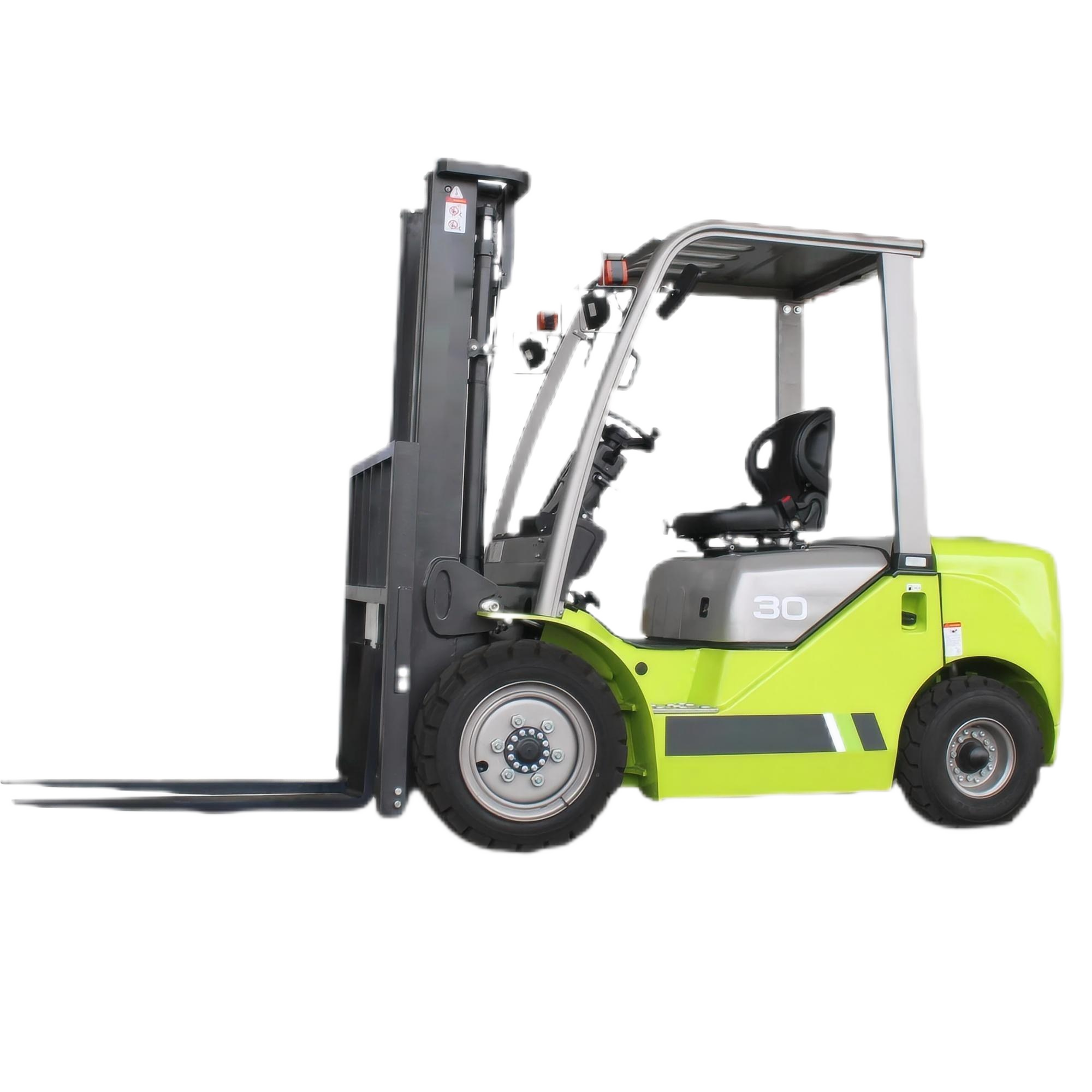When operating electric forklifts in cold weather, protection measures should focus on three core aspects: battery performance, component condition, and operational safety to prevent performance degradation and potential safety hazards.

I. Before Operation: Focus on Inspection and Preheating
- Check the battery temperature. If it is below 5°C, preheat the battery indoors first to avoid a sudden drop in capacity caused by direct startup in low temperatures.
- Inspect whether the battery connection wires are loose. Low temperatures may cause terminal contraction, so re-tighten the terminals to prevent poor contact.
Inspection of Key Components
- Check the status of hydraulic oil and gear oil. Ensure that low-temperature-adapted oil grades have been replaced to prevent operational jams caused by increased viscosity.
- Test the braking and steering systems. Low temperatures may reduce braking sensitivity, so idle the forklift for 1-2 minutes to confirm that the functions are normal before operation.
Necessary Preheating Operation
After starting the forklift, let it idle for 5-10 minutes to allow the motor and hydraulic pump to warm up gradually. Then, test operations such as fork lifting and mast tilting.
II. During Operation: Control Operation Rhythm and Avoid Risks
Slow Down Driving Operations
- Avoid sudden acceleration and emergency braking. The instantaneous discharge capacity of the battery decreases in low temperatures, and aggressive operations will further shorten the battery life.
- Reduce speed when turning or driving on ramps. Tires become hard and their grip weakens in low temperatures; excessive speed may lead to slipping or tipping.
- Do not operate the forklift for excessively long periods in a single shift. If the battery life decreases significantly (e.g., by more than 40% compared to normal temperatures), stop operation promptly and recharge the battery.
- Avoid prolonged idling. Turn off the power when the forklift is not in use to reduce unnecessary battery consumption.
Avoid Environmental Risks
- Bypass icy or snow-covered areas. If passage is unavoidable, clear the ground in advance, lay anti-slip mats, or install tire chains if necessary.
- Ensure good visibility. Timely remove frost and ice from windshields and rearview mirrors to prevent collisions caused by blocked vision.
III. After Operation: Conduct Proper Maintenance and Storage
Recharge the Battery Promptly
- Complete recharging within 1 hour after operation. In low temperatures, a depleted battery is harder to recover and prone to "sulfation," which shortens its service life.
- Maintain the charging environment temperature between 10-25°C. Avoid charging outdoors or in low-temperature environments to prevent reduced charging efficiency.
Vehicle Cleaning and Inspection
- Remove snow and ice from the vehicle body, with a focus on wiping the battery terminals and hydraulic pipeline joints to prevent component damage caused by freezing.
- Inspect tire wear. Rubber is prone to cracking in low temperatures; if cracks are found, replace the tires promptly to avoid the risk of tire blowouts.
Standardized Storage Methods
- Prioritize storing the forklift indoors or in a garage with thermal insulation.
- If outdoor storage is unavoidable, cover the battery and control panel with a waterproof cloth to prevent moisture and freezing.

